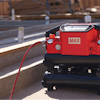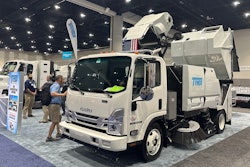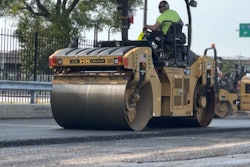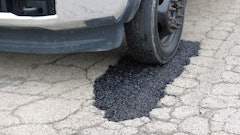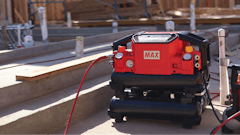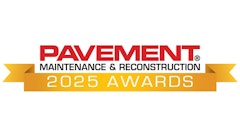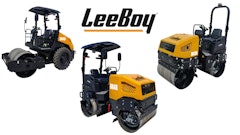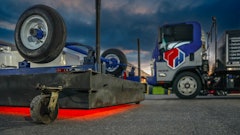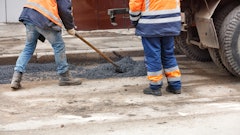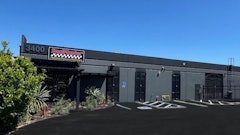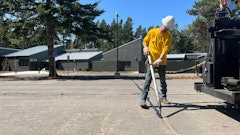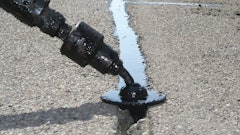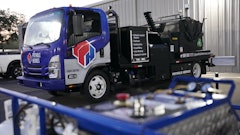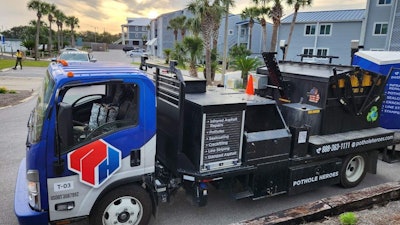
If you want to grow your pavement maintenance business, using infrared (IR) asphalt repair technology is an excellent and powerful tool to add to the other offerings you have for customers, especially when paired with an asphalt hot-box. For you, the contractor, the benefits of increasing IR business are:
- Speed: Infrared + hotbox patches can be completed in as little as 15 minutes, start-to-finish.
- Efficiency: Two-person crews, no heavy machinery, low work-zone footprint.
- Margins: Above average profit margins when effectively implementing IR solutions.
However, there are many property managers and other potential clients that are unfamiliar with IR, and others still, who might have misconceptions about how it works or its effectiveness.
Zach Young, the Chief Operating Officer, Potholes Heroes, a pavement patching and repair contractor based out of southern Florida, has run into this time and time again. Young described getting pushback from other contractors in the industry in addition to misinformed clients or clients who had a prior negative experience with IR that wasn't implemented correctly.
"I was in the Nashville airport, talking to a guy and he just straight up told me that infrared isn't as good," Young recounted the anecdote from a time before he got involved with IR himself. "A guy told me that it takes too much time and that it doesn't last as long. It had the opposite effect on me, though. It just made me want to know more. I'm kind of contrarian that way. I've got to find out for myself, and I did." That personal investigation led Young and Potholes Heroes to grow into a hugely successful pavement repair and maintenance network, which has spread nearly statewide, doing nothing but pothole repair.
If you're trying to grow your business, however, you have to do for your customers what Young sought out for himself. Where he too the time to seek out answers and educate himself on the power of infrared, you have to step in, know the facts, and be able to educate clients on just how powerful IR solutions can be for their property liabilities.
Step One: Identify Opportunity
The first step in expanding your business with infrared solutions requires you to be proactive in situations with clients and prospectives. Don't wait for customers to seek out infrared, but instead, initiate contact points when you identify potential properties, liabilities, or other appropriate situations that IR can be best taken advantage of. In order to do that, first of all, you have to at least know the basics. [New to IR? Watch this video here]
"First things first, you have to make the customer ask that question: what is infrared?" said Young. 'We get to that point, by offering them an alternative, arguably superior method. You tell them that you can fix their problem with infrared technology, initiating the conversation about it from your side." There are really only two questions they might initially ask in this conversation. One might be that they've heard infrared doesn't work, and the second could be that they've never even heard of it. Both are good for you in step 2.
For those who already own a pavement maintenance business, and offer sealcoating, paving, striping, and/or sweeping; another part of expaning opportunities for IR comes with teaching your crews to spot liabilities and trouble spots when they are on site for other work. Once new opportunities hare identified, step two comes into play.
Step Two: Educate Customers
Opportunity plus education is the secret formula for selling your infrared services. Any damaged areas of asphalt in a parking lot can be fixed using infrared, but there are some places better suited than others. Pairing those with the education is where a potential/lead suddenly becomes a paying client. One such scenario is the high traffic areas, for property managers who can't afford a lot of disruption.
"The place where it wins is like to drive lane of a restaurant and McDonald's at lunchtime," Young said. "or a situation where after-hours fixes aren't a viable option for the customer. For instance, it could be at the entrance of a big-box retailer at Christmas time on Black Friday, the most inopportune time and place. Suddenly, a liability opens up, and god-forbid you have to drag in a saw and kick up a bunch of dust, and make a huge mess. You explain that you can bring in an infrared machine and a hot box, take 15 minutes, with minimal environmental and traffic disturbance, and have their problem solved like you were never there."
Even in cold northern climates this scenario is possible, as the hot-box units are capable of heating stored or reclaimed asphalt into usable material for permanent patches. Even though Young lives in sunny Florida now, he is originally from Ohio, and said, "Up there, they use cold patch until the spring and then come back and repair the hole again. However, with these tools you can reclaim asphalt in January when it's zero degrees outside and make a permanent repair."
Not only can the smaller Hot Boxes keep short runs of asphalt warm for quick patching jobs, but they can heat-up bulk stored asphalt long after the fact. This means a crew could stay busy through the usual off-season as much as they wanted. There's no shortage of damage done to roads or parking lots in the winter, often by snow plows.
Contractor's who can work in those freezing conditions are able to charge a premium for their services, which are of a much higher quality and durability than a traditional cold-patch. It's estimated that, on average, a contractor could pay for a 2-ton Hot Box with the savings from lost asphalt in as short 4-6 weeks.
Step Three: Referral Pipeline
Whether you've introduced a new client to the power of infrared, or you provided education to a dubious prospect, where you truly make your money is in step three. If you've done your part correctly, having identified liabilities or jobs where IR outperforms other solutions, and you've correctly implemented the technique, then this part can really take care of itself.
As the customer sees, day-in and day-out, how seamlessly IR patches blend into the original asphalt surrounding it, and how durable it is, they become an advocate for IR all on their own. How you take advantage of this depends on your level of engagement after the fact. Asking for referrals can be challenging, but you should never hesitate when it comes to infrared repair referrals. You can always stand on the quality of the work, the longevity of the patch, the speed of repair, and the low level of traffic disruption.
This is why educating your customer is so important, because an educated customer will educate someone else. "There's nothing anybody likes more than to tell someone something they know, that the other person doesn't," said Zack. "When anybody asks that property manager how that pot hole got filled in so quickly, so seamlessly, they won't hesitate to turn around and talk about infrared and how easy it was. When they're proud of it, they'll be proud to tell someone."
In the case of infrared patches, which don't leave behind obvious saw cut lines and edges, the visual esthetic appeal is something every customer you service will be excited to point out.




